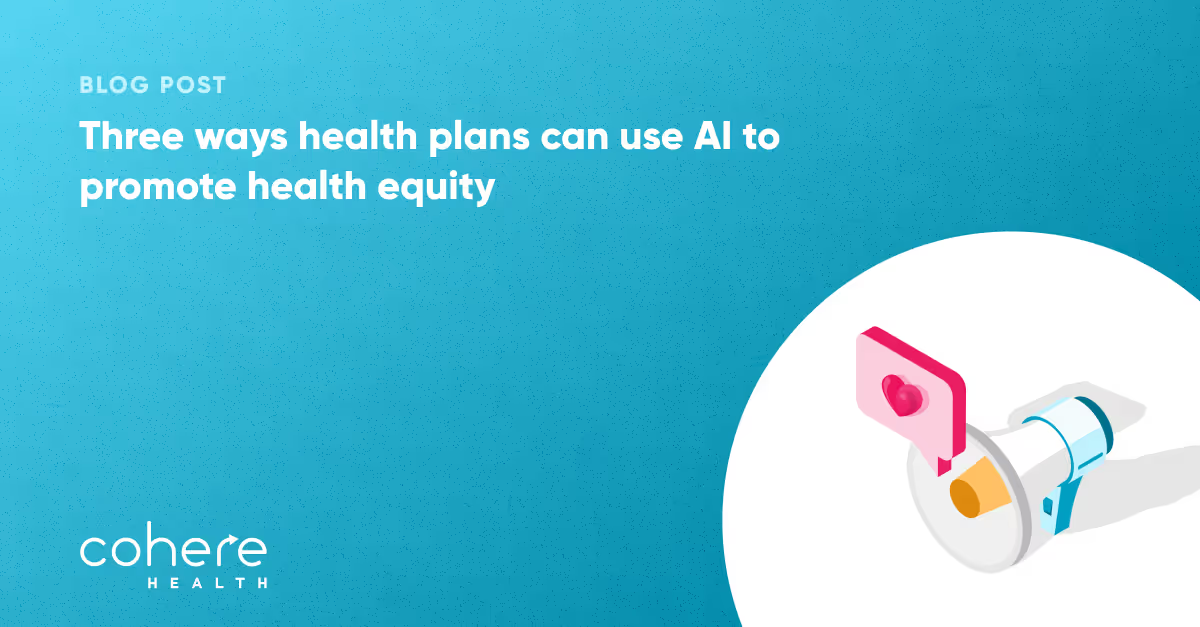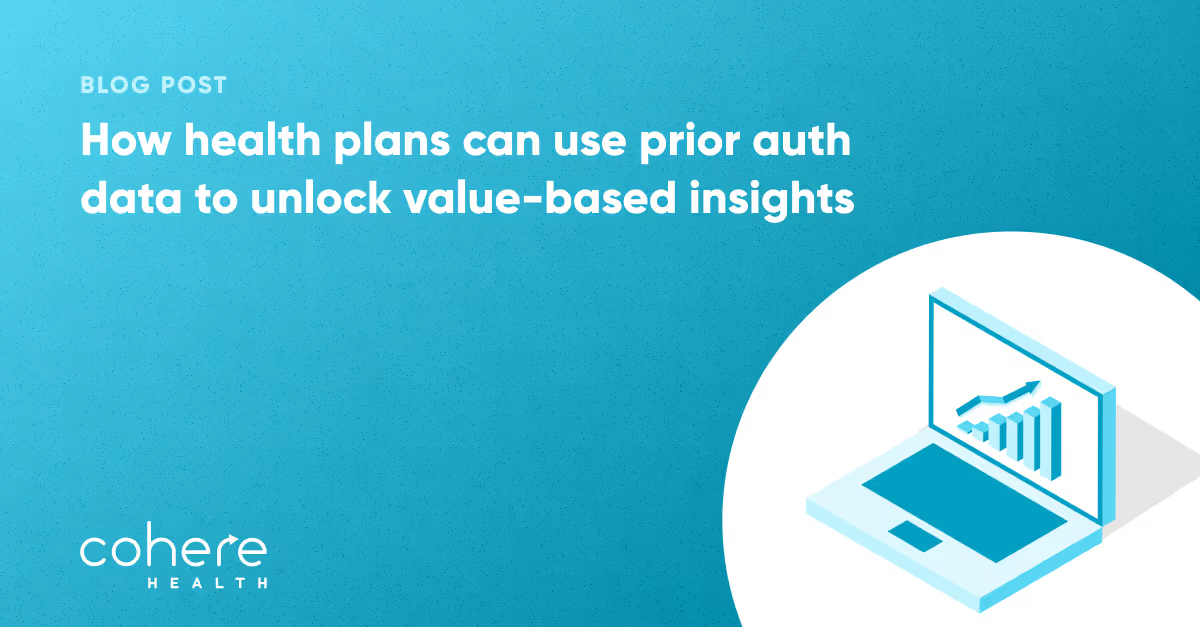Three ways health plans can use AI to promote health equity
Published:
November 14, 2023

Intelligent prior authorization applies AI, including machine learning, to change prior authorization from a transactional focus to an opportunistic focus as a means of improving care. By prioritizing health equity, health plans can improve care access and outcomes for their populations. Intelligent prior authorization solutions apply care paths, clinical nudges, and episodic authorizations to help health plans promote health equity.
The push for greater health equity
The Centers for Medicare and Medicaid Services (CMS) made advancing health equity a priority by addressing underlying disparities in the healthcare system one of its strategic pillars for 2023. Three ways CMS is approaching the improvement of health equity in its strategic plan include:
- Promote broader access to health-related social needs, including greater adoption of related quality measures, coordination with community-based organizations, and collection of social needs data
- Close the gaps in health care access, quality, and outcomes for underserved populations
- Promote the highest quality outcomes and safest care for all people
Health plans that proactively develop strategies to address health equity concerns will align with broader initiatives by regulatory bodies and can improve care outcomes for their members.
AI empowers prior authorization to address both health equity and better overall care
Advanced technology makes it easier for physicians to treat the whole patient and address health inequities. Health plans can be a critical player in addressing social drivers of health and health equity concerns, such as access to care and the length and scope of the care episode.
Intelligent prior authorization enables a new layer of analysis about patient cohorts that health plans can use to improve care outcomes by digitizing intake and pulling patient information directly from the electronic medical record (EMR) or clinical attachments.
End-to-end, patient-specific care is possible using three intelligent prior authorization innovations, including evidence-based care paths, clinical nudges, and bundling related authorization requests in episodic authorizations.
Three prior authorization innovations to drive health equity
- Care Paths
Intelligent prior authorization applies AI and machine learning to population-specific data to match each patient to the care path best-suited to their clinical and social information. Care paths layer evidence-based clinical intelligence over health plan policy to encourage adherance to the most up-to-date clinical practice and provide longitudinal context for prior authorization decisions. Care paths enable physicians to treat the whole patient. Here’s how care paths draw on health plan data to match patients with better care:
- Charting ideal journeys from favorable patient cohort outcomes for patients with similar clinical backgrounds
- Pulling relevant patient clinical evidence from clinical attachments and directly from the EMR
- Analyzing historical claims data to augment yes/no policy-based automated approvals
- Clinical nudges
Nudges enhance care paths’ effectiveness for patients impacted by health inequities. These in-workflow notifications are presented during a service request and offer health plans an opportunity to collaborate with physicians to encourage high-value, evidence-based care.Clinical nudges can be deployed to promote health equity by ensuring the care path is best reflective of the patient’s specific needs, suggesting:
- Lower-cost, underutilized services
- Preferred (and in-network) partners for these services
- Accessible sites-of-service reflective of the patient’s transportation access
- Episodic authorizations
With potential transportation issues and a decreased number of sites-of-services available in many rural and lower-income areas, at-risk patients can benefit from a shorter care journey requiring less transportation. Intelligent prior authorization harnesses machine learning models to suggest related services and aggregate them into a single “episodic authorization” request. Episodic authorizations can also encourage evidence-based care to improve outcomes. A set of post-surgical physical therapy services can be preauthorized when a surgery is approved. If both authorizations are approved simultaneously, the patient may be more likely to complete the entire episode of care. This process allows the patient and physician to plan for and address barriers during the primary intervention. Health plans can address health inequities for underserved populations by ensuring the right care reaches the right patient at the right time.
Download our white paper, The Tech-Powered Shift from Transactional to Transformational Prior Authorization, for more information about how automation and clinical innovation solutions drive savings and improve outcomes for health plans.
Available For Download
Stay ahead with expert insights on transforming utilization management and payment integrity—delivered straight to your inbox.



